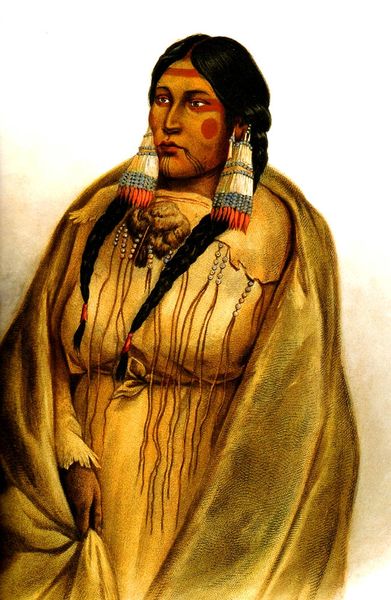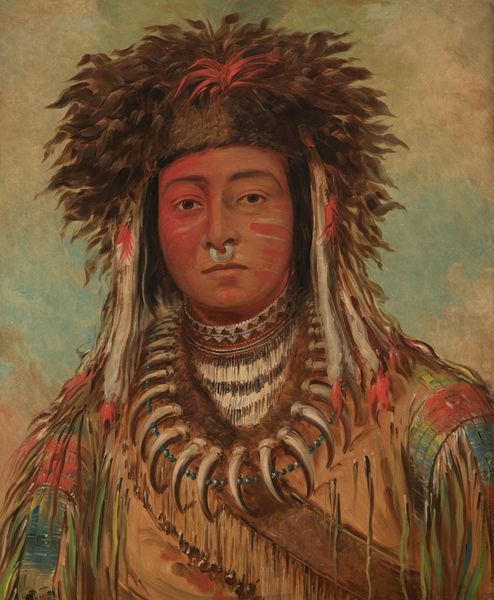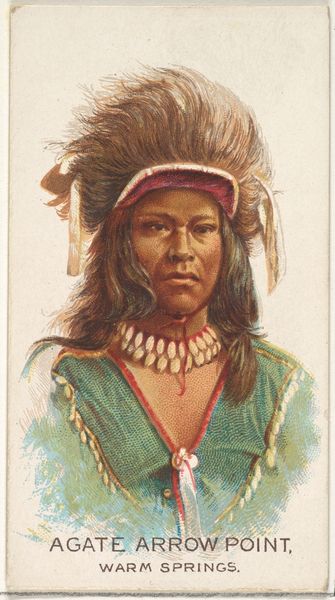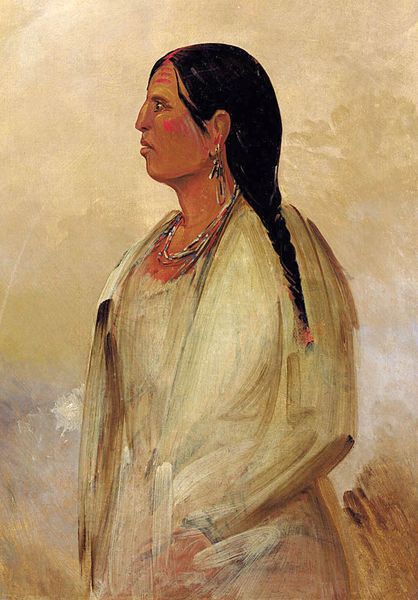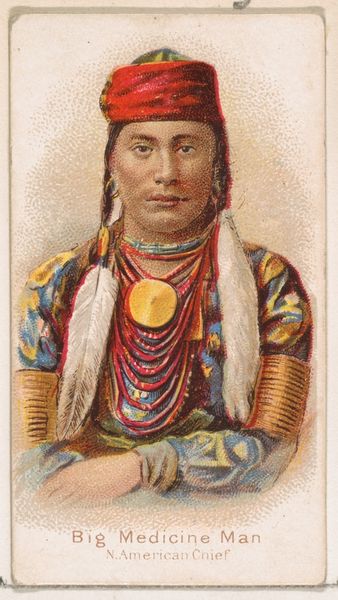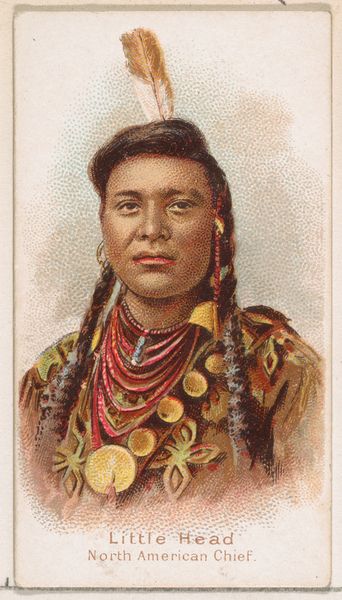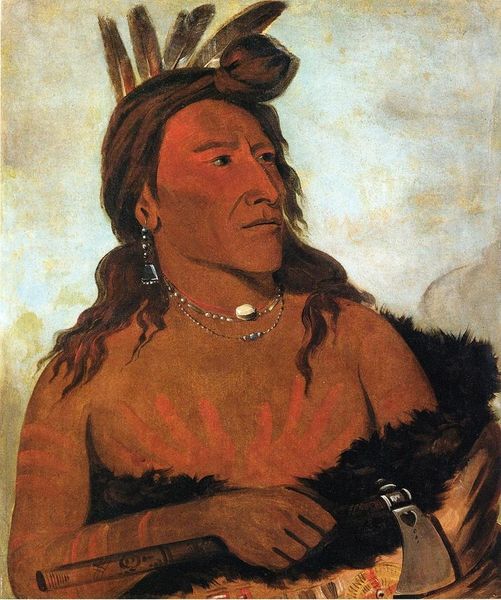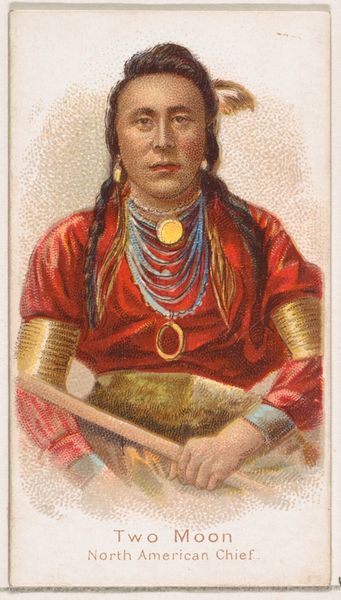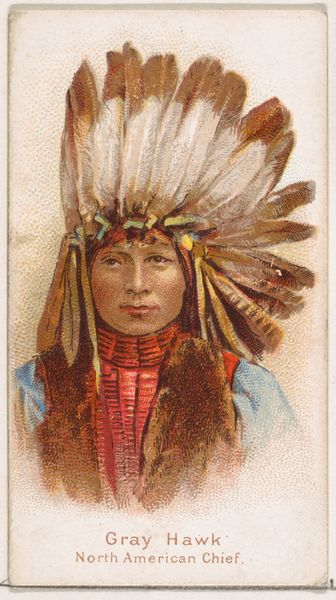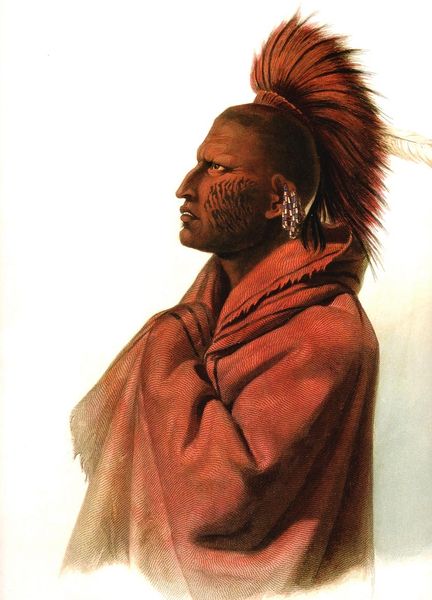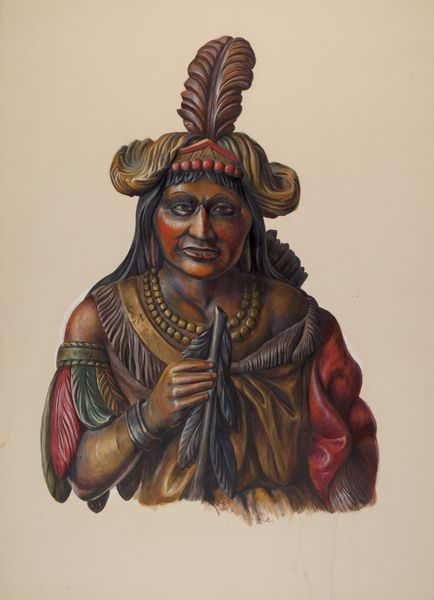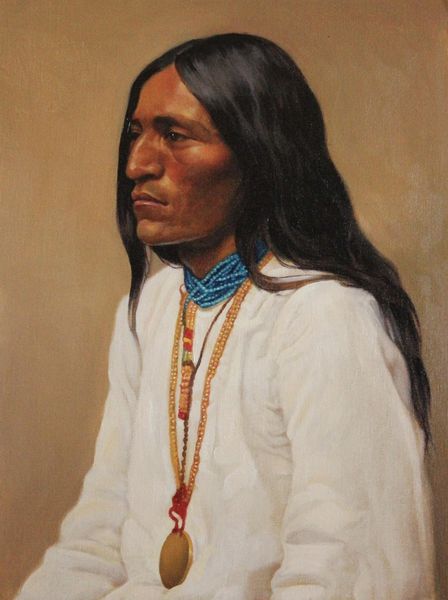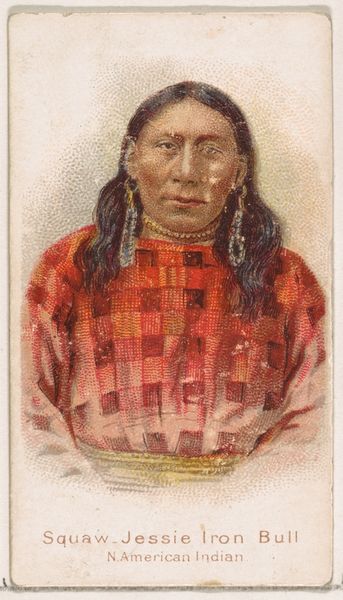
painting
#
portrait
#
painting
Copyright: Public domain
Karl Bodmer made this portrait of Psihdja Sahpa, a Yanktonian Indian, in the early to mid-19th century. Bodmer’s work documented the appearance and customs of Native American tribes encountered during his travels through the American West. Here, the sitter's attire and adornments offer insights into the cultural practices of his community. Consider the significance of the tattoos, jewelry, and hairstyle, each element likely holding specific cultural meaning within the Yanktonian context. The time in which this work was produced is essential to understanding it. As the United States expanded westward, encounters between European Americans and Native American tribes increased, often resulting in conflict and displacement. Bodmer's portraits, while valuable as visual records, were also products of this complex historical moment. To fully understand Bodmer's portrait, we might consult historical accounts, anthropological studies, and Native American oral traditions to provide a more comprehensive understanding of its cultural significance. Artworks like this underscore the role of the historian in understanding art as a product of specific cultural and institutional forces.
Comments
No comments
Be the first to comment and join the conversation on the ultimate creative platform.
